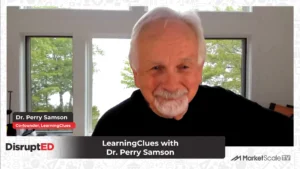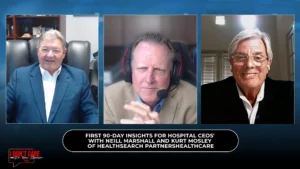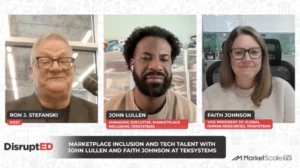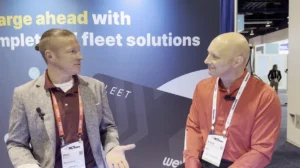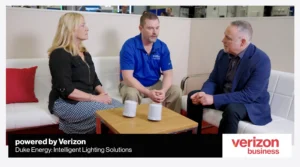The EV Industry Needs Standardization as Convenient as Filling Up at the Gas Pump for Improved Growth
The burgeoning field of electric vehicle (EV) technology is often characterized by rapid innovation, which makes industry-wide standardization a difficult, albeit crucial, endeavor. But with Texas mandating Tesla technology for EV charging new questions arise. The challenge of standardization has long been how to reconcile divergent visions for charging infrastructure. While Tesla’s CEO Elon Musk aimed for fast charging as the cornerstone of the company’s strategy, European stakeholders initially learned a different solution. This divergence led to a myriad of charging plugs and systems, each with their unique advantages and limitations.
As the industry has matured, however, there’s growing consensus that standardization is not just beneficial but essential, even as debates persist over the costs. What’s increasingly clear is that this is no longer just a technical issue; it has policy implications that could shape the future of the automotive industry.
Bharat Balasubramanian knows the history and future of EV charging standards. Currently, he is a Professor and Executive Director of the Center for Advanced Vehicle Technologies at College of Engineering at the University of Alabama. He is also the Chief Mobility Research and Development Officer of the Alabama Transportation Institute. Previous to his role in higher education, Balasubramanian was the Vice President of R&D for Mercedes-Benz for close to four decades.
Balasubramanian shared his insights on why he feels standardization is needed for the EV industry. He stated that the way fuel-powered vehicles are convenient globally, so should EVs.
Balasubramanian’s Thoughts on Standardization
“Elon wanted fast charging. We in Germany were of the opinion, we first need to do slow charging and home charging. So in a very historic moment, sometime in 2009, I invited all the German, American and European manufacturers, as also the Japanese, to a meeting in Berlin to discuss the standardization of electric charging receptacles. I remember the meeting clearly because it was in a huge room in Berlin and I made a grand speech saying we are at the cusp of something new. Just remember someone 150 years ago standardized the filling nozzle and today you can take your car anywhere in the world and it will work because three items are standardized. It’s the diameter of the nozzle, it’s the curvature of the nozzle and the third thing is the flow rate.
“So, someone smart thought of that and I said we are at the same point and that’s when the Mennekes type 2 was born. It’s called Mennekes but it was a Mercedes-Benz plug which we developed and gave over the designs to the Mennekes so that they could manufacture it. Everyone agreed, the Japanese nodded sagely but like many times they went home and developed CHAdeMO and thankfully CHAdeMO is going to die a death in the next few years. At the same time there was a lot of pressure to match what Elon Musk was doing with the fast charging and that’s when the combi charging and that was after my time after I retired from Mercedes in 2012 and joined UAE, that’s when the combi plug came in where we add two further pins for DC fast charging.
“Now, DC fast-charging with the combination of two pins, it can go up to 350kW. Typically, the Tesla fast charging only goes up to 250kW. Now, coming back to your question is: it a good idea or a bad idea? Let me first say standardizing is always a good idea. The only question is what does it cost to implement that technology and here I really cannot give you much insight because the Tesla plug, it’s a two pin plug and that time we had discussions with Elon on that. It does slow and fast charging and it does AC single phase and DC fast charging. In Europe we preferred the three phase Mennekes type plug and added the two pins for the DC fast charging. So we separated it because our belief in the earlier days was fast charging will be detrimental to the battery sizes and the knowledge we add of the battery.
Balasubramanian’s Additional Thoughts
“Today it is no longer a concern because the battery capacities are so huge. Mercedes S550 is 110kWh and so a one seat charging would be 110kW and very rarely are you going to charge it at 110kW. Secondly most of us charge at home, it’s typically around 9-11kW. So at that time we felt the three phase up to 22kW was sufficient but DC fast charging would be needed if you do overland trips. Coming again to Tesla, Tesla has innovated and brought out a good solution. If the industry can standardize on it, it’s good. I would not think mandating it through some non-technical personnel and by that I mean the Texas government to say we will mandate a technology. Typically administrative agencies including CARB, including EPA, NHTSA, they don’t mandate technologies. They mandate what function should be available and if you can get the same function with a Tesla plug or with a combi plug with DC fast charging, I think both ways are viable.
“Ultimately, the manufacturers will have to make the judgment call what is in the long range cheaper for the electronics that you need to put into the vehicle. My feeling and this is purely anecdotal, no facts to it, that Tesla plug electronics will be slightly more expensive than what we have with the type 2 combi plug or type 1 combi plug. It is much too early because we are having a competition of different technologies both on the vehicle side as also on the charging infrastructure side and at this time I would not want to take any sides on either of them. In any case, you can have intermediate plugs to go from one system to the other and I don’t think there’s any real necessity for a state agency to mandate a standardization. What needs to be standardized and the SAE I think is doing it is to have this NAX plug standardized in such a form that anyone who wants to use it is clearly aware of what the standard entitles. Which is what we did with the Mennekes plug, it’s now standardized in ESO as also in the DEAN as also in the SAE types.
“I hope it will be received poorly and that the automotive OEMs will lobby against it because we want to have a choice. Typically automotive OEMs would like to have a choice of what technology they use and not have a mandate coupled with some sort of funding. So I hope it will not work out. But there have been other instances like California Air Resources Board, it mandated various emissions. These emissions were more stringent than EPA regulations and many, many other states have picked it up. I think today over 17 states have done CARP. But I hope this will not happen here. We still need a bit of time for the technology to evolve and then come to a standard later down the road. Thank you.”


